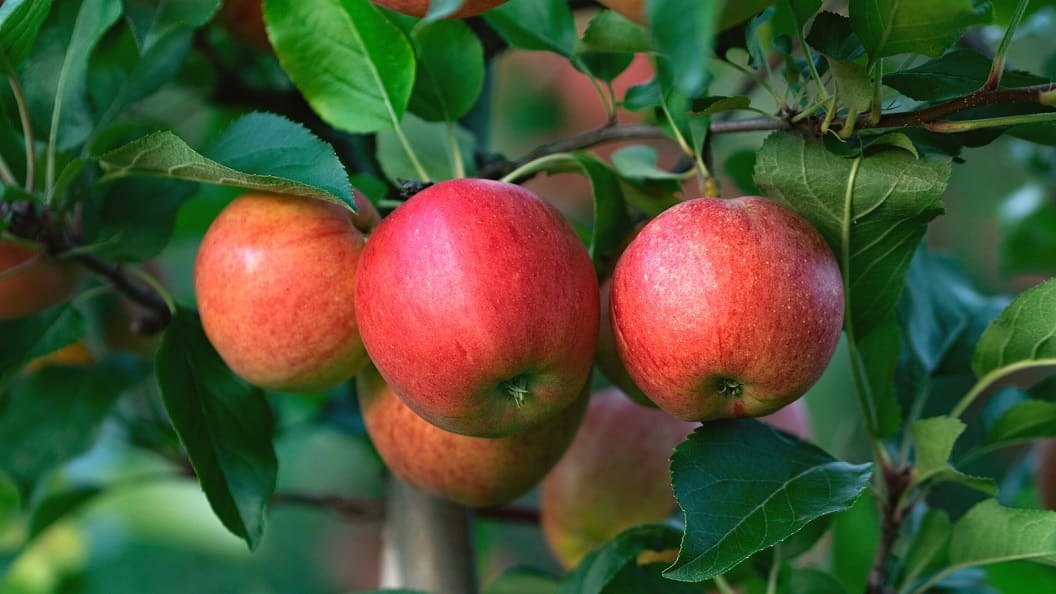Picture this: You’re standing in the produce aisle, overwhelmed by the rainbow of apple choices before you. Crimson Red Delicious, bright green Granny Smiths, golden Honeycrisp, and dozens of other varieties beckon from their displays. Which one should you choose for your afternoon snack? Your weekend baking project? Your child’s lunchbox?
If you’ve ever felt bewildered by the sheer variety of apples available today, you’re not alone. With over 7,500 apple varieties grown worldwide and more than 100 cultivated commercially in the United States, choosing the right apple can feel like navigating a delicious maze.
But here’s the exciting part: each variety has its own personality, its own story, and its own perfect moment to shine.
By the end of this guide, you’ll transform from an overwhelmed apple shopper into a confident connoisseur who knows exactly which variety to reach for, whether you’re planning a classic apple pie, crafting homemade cider, packing a healthy snack, or simply craving that perfect crisp bite that makes your taste buds sing.
👉 Read the Ultimate Guide for Beginners to Growing Apples and Apple Trees
The Fascinating World of Apple Diversity
Before we dive into specific varieties, let’s appreciate the remarkable journey that brought us this incredible diversity. Apples originated in the wild forests of Central Asia thousands of years ago, eventually making their way to Europe with the Romans, who were already cultivating different varieties by the 6th century BC.
When European settlers arrived in America, they brought their beloved apple trees with them, and the rest, as they say, is delicious history.
Today’s apple varieties emerged through both deliberate breeding and happy accidents. Some of our most beloved apples, like the famous Granny Smith, were discovered as chance seedlings—lucky finds that changed apple history forever.
Others, like the modern Honeycrisp, are the result of careful scientific breeding programs at institutions like the University of Minnesota and Cornell University, designed to create the perfect combination of sweetness, crispness, and shelf life.
What’s particularly fascinating is how dramatically the apple landscape has changed. In the mid-1800s, North America boasted about 17,000 named varieties. That number dwindled considerably during the 20th century as commercial agriculture focused on varieties that shipped well and had long storage life.
Fortunately, we’re now experiencing a renaissance of interest in both heirloom varieties and innovative new breeding programs, giving us the best of both worlds.
Understanding Apple Personalities: The Complete Flavor and Texture Guide
Think of apples as having distinct personalities that exist across multiple dimensions. The most obvious is the flavor spectrum, ranging from boldly tart varieties that make your cheeks pucker with their bright acidity to honey-sweet apples that taste like nature’s candy.
Between these extremes lies a wonderful world of balanced sweet-tart combinations that offer complexity and depth.
But flavor tells only part of the story. Texture plays an equally crucial role in determining an apple’s best use. Understanding these texture categories will revolutionize how you choose apples for different purposes.
- Crisp and Dense: These apples deliver that satisfying snap when you bite into them, with large, well-structured cells that hold their juice until the moment you bite down. Honeycrisp exemplifies this category, though varieties like Jazz and Cosmic Crisp also excel here. These apples are snacking superstars but can become mushy when overcooked.
- Firm and Fine-Grained: These varieties have tightly packed cells that create a solid, substantial bite without being tough. Golden Delicious and Fuji are excellent examples. Their structure makes them incredibly versatile, holding up well to both fresh applications and cooking.
- Soft and Yielding: Some apples, particularly heirloom varieties like McIntosh, have naturally softer flesh that almost melts in your mouth. While they’re not ideal for maintaining shape in pies, they create the silkiest applesauce and most aromatic baked apples you’ve ever tasted.
- Dense and Dry: Varieties like Rome Beauty have less juice but more substance, making them ideal for baking applications where you don’t want extra moisture compromising your crust or causing soggy desserts.
The key insight here is that there’s no single “best” apple—only the best apple for your specific purpose.
The Heavy Hitters: Most Popular Varieties You Need to Know
Gala: The Universal Favorite
Originally from New Zealand in the 1930s, Gala apples have earned their popularity through sheer likability. These beautiful striped fruits, with their distinctive red and yellow coloring, offer a mild sweetness with subtle pear-like notes that appeals to almost everyone.
Their thin skin makes them particularly appealing to children, while their balanced flavor works beautifully in both sweet and savory applications.

What makes Gala special is its versatility in fresh preparations. The delicate flavor doesn’t compete with other ingredients, making it perfect for fruit salads, cheese boards, and light salads where you want apple texture without overwhelming apple flavor.
When cooked, Gala’s mild nature means it pairs beautifully with stronger-flavored apples in baked goods, contributing sweetness without dominating the dish.
Honeycrisp: The Game Changer
When Honeycrisp burst onto the scene in 1991, it fundamentally changed what consumers expected from an apple. Developed through a decades-long breeding program at the University of Minnesota, this variety revolutionized the apple world with its incredible crunch and honey-sweet flavor balanced by just enough tartness to keep things interesting.
The secret behind Honeycrisp’s distinctive texture lies in its cellular structure. The cells are larger than those in traditional varieties, creating that explosive crunch that’s become its signature. This same structure means Honeycrisp apples actually improve with a few weeks of cold storage, as the cells continue to develop their characteristic snap.

However, this beloved variety comes with a few quirks. Honeycrisp trees are notoriously difficult to grow, requiring specific temperature management and careful handling, which explains their premium price. In the kitchen, their high water content means they don’t hold their shape well when baked, though they add incredible flavor to any recipe.
👉 Here’s How to Dehydrate Apples at Home: Easy Steps for Perfect Results
Granny Smith: The Fearless Baker
Meet the rebel of the apple world. Bright green, uncompromisingly tart, and absolutely fearless in the face of heat, Granny Smith apples have been the baker’s best friend since Maria Ann Smith discovered them growing in her Australian compost pile in 1868.
Their bold acidity and firm structure make them the gold standard for apple pies, tarts, and any baked good where you want the apple flavor to shine through layers of sugar and spice.
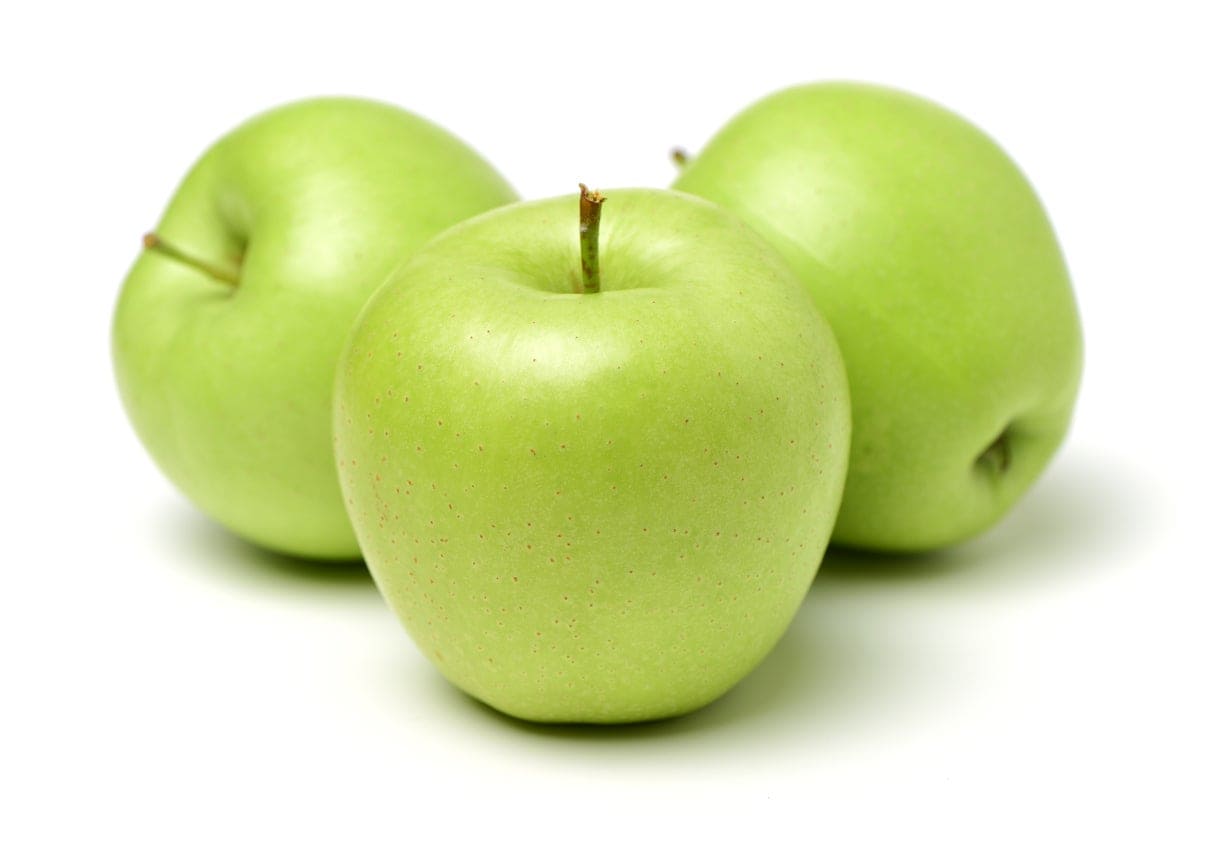
What sets Granny Smith apart is its remarkable stability. The high acid content not only creates that signature pucker but also prevents the flesh from browning quickly when cut, making these apples perfect for fruit salads and advance meal prep.
In baking, they maintain their shape beautifully while their tartness provides essential balance to sweet ingredients. Professional bakers often use Granny Smith as their baseline, adjusting sweetness with other ingredients rather than starting with sweeter apple varieties.
Fuji: The Sweet Sensation
Born in Japan in the 1930s from the marriage of Red Delicious and an heirloom variety called Ralls Janet, Fuji apples represent the ultimate expression of apple sweetness. With sugar content that can reach 15-18 percent, they’re among the sweetest apples you’ll find, yet they maintain enough complexity to avoid being cloying.
Fuji apples showcase one of nature’s most impressive preservation systems. Their dense flesh and thick skin allow them to stay crisp for weeks without refrigeration, and months when properly stored.
This exceptional keeping quality made them incredibly popular in commercial production, but it also means you can buy them with confidence, knowing they’ll maintain their quality in your fruit bowl far longer than most varieties.
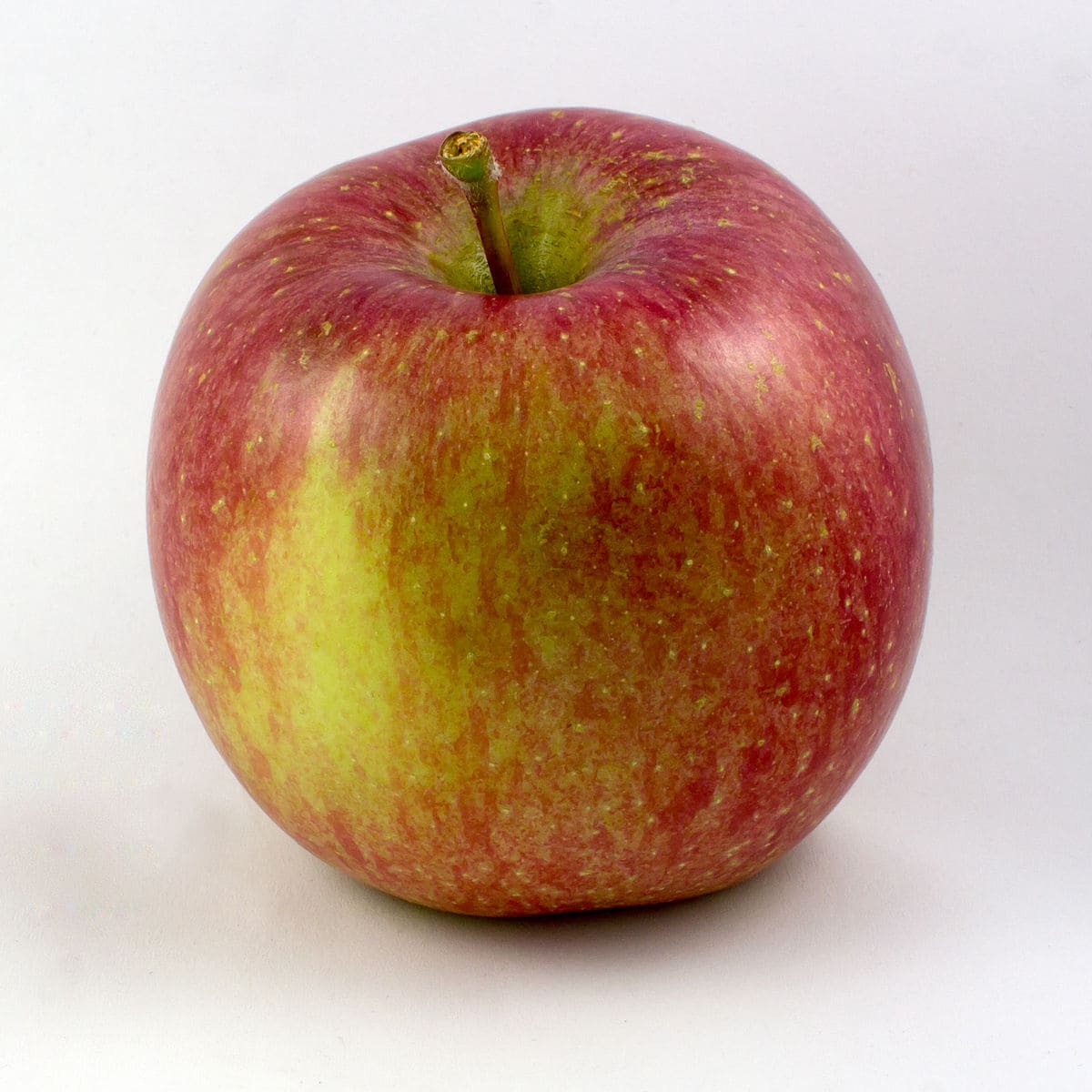
In the kitchen, Fujis shine in fresh applications where their sweetness can be appreciated without competition. They’re magnificent in salads, particularly when paired with bitter greens or tangy cheeses. While they can be baked, their high sugar content means they’ll caramelize quickly, so they’re better suited to recipes where some mushiness is acceptable.
Red Delicious: The Classic American
The Red Delicious holds a unique place in American apple history as the variety that dominated supermarket shelves for decades.
Originally discovered as the “Hawkeye” apple in Iowa in 1880, it quickly rose to become the quintessential American apple, known worldwide for its distinctive elongated shape with five pronounced bumps at the bottom and deep crimson color.
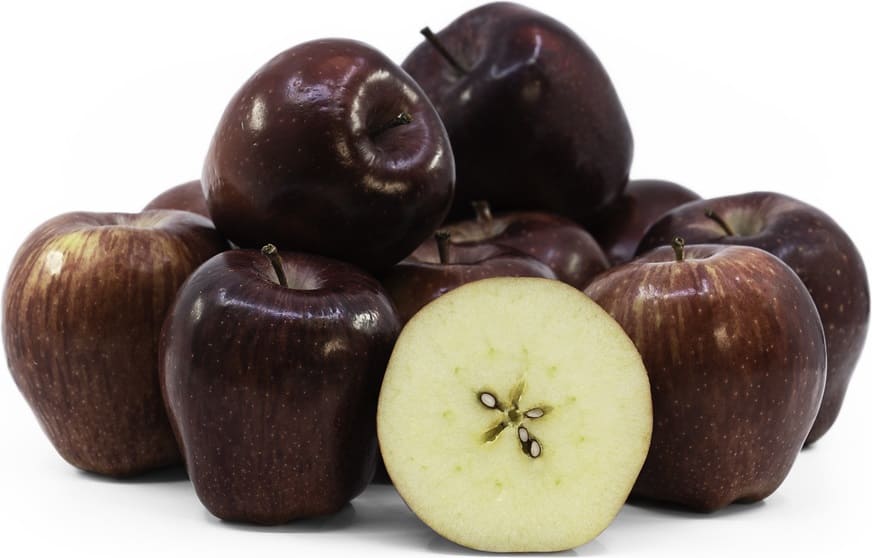
While Red Delicious has fallen from its former prominence due to breeding that prioritized appearance over flavor, well-grown examples still offer mild sweetness and tender texture that many find comforting and familiar.
The thick skin can be bitter, but the flesh underneath provides gentle apple flavor that works particularly well for children and those who prefer subtle tastes. Red Delicious performs best when eaten fresh, as its soft texture doesn’t hold up well to cooking applications.
👉 Here’s How to Get Rid of Bitter Taste in Cucumbers With 4 Simple Techniques
McIntosh: The Aromatic Softie
Canada’s national apple brings something entirely different to the table with its distinctive soft, almost melting texture and incredibly aromatic qualities. Discovered by John McIntosh in 1811, this variety revolutionized apple breeding and became the parent of many modern varieties, including Empire and Cortland.
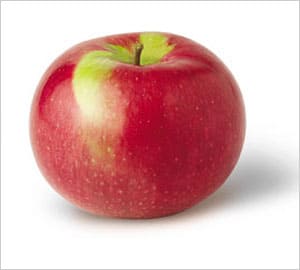
What makes McIntosh special is its unique “vinous” flavor—often described as having hints of wine, melon, or even pineapple. The tender white flesh breaks down easily when cooked, making McIntosh the secret weapon for creating the smoothest, most flavorful applesauce imaginable.
The natural pink tinge that develops when cooking unpeeled McIntosh creates applesauce with beautiful color and complex flavor that store-bought versions simply cannot match.
Braeburn: The Balanced Performer
Discovered as a chance seedling in New Zealand in the 1950s, Braeburn represents the perfect marriage of sweet and tart flavors with exceptional versatility. The beautiful red and yellow striped skin hints at the complexity within—a crisp, juicy flesh that delivers both sweetness and enough acidity to keep things interesting.
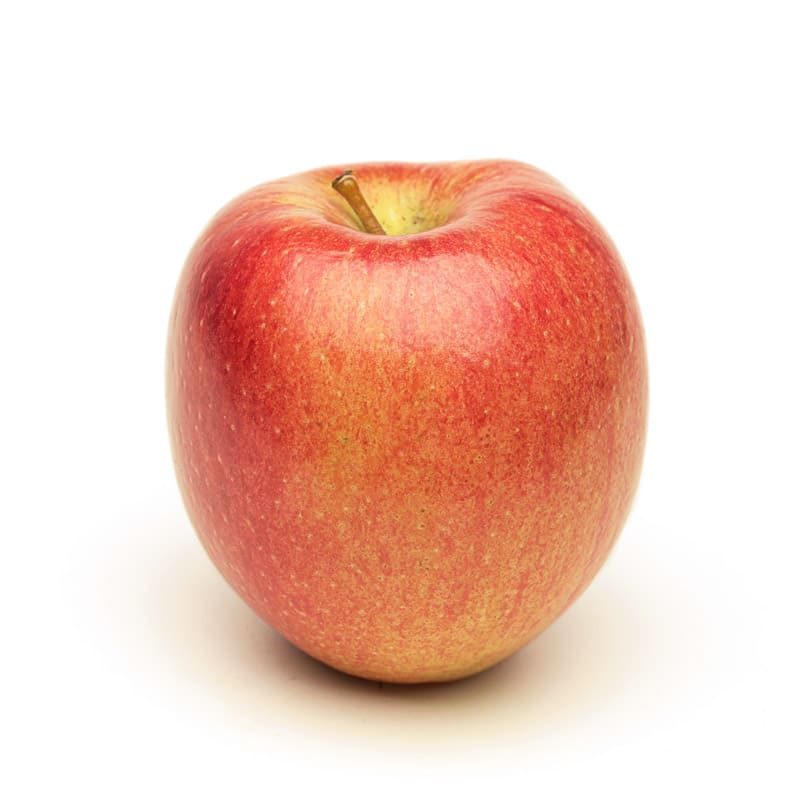
Braeburn’s claim to fame lies in its remarkable stability across different applications. Whether eaten fresh, baked into pies, or cooked into sauce, Braeburn maintains its character while adapting beautifully to different uses.
The flesh holds its shape well when baked, while the balanced flavor profile means it pairs excellently with both sweet and savory ingredients. Professional chefs particularly appreciate Braeburn for its consistent performance and the way its flavor actually improves during cooking, developing deeper, more complex notes.
Golden Delicious: The Versatile Champion
Despite sharing part of its name with Red Delicious, Golden Delicious is a completely different apple with an entirely different personality. These yellow beauties represent the ultimate all-purpose apple, adapting gracefully to virtually any culinary challenge you throw their way.
What makes Golden Delicious so versatile is its balanced sweet-tart flavor profile and firm, fine-grained texture. The flesh holds its shape reasonably well when cooked but isn’t so firm that it becomes tough.
The flavor is complex enough to be interesting on its own but not so distinctive that it clashes with other ingredients. This makes Golden Delicious the apple equivalent of a little black dress—appropriate for almost every occasion.
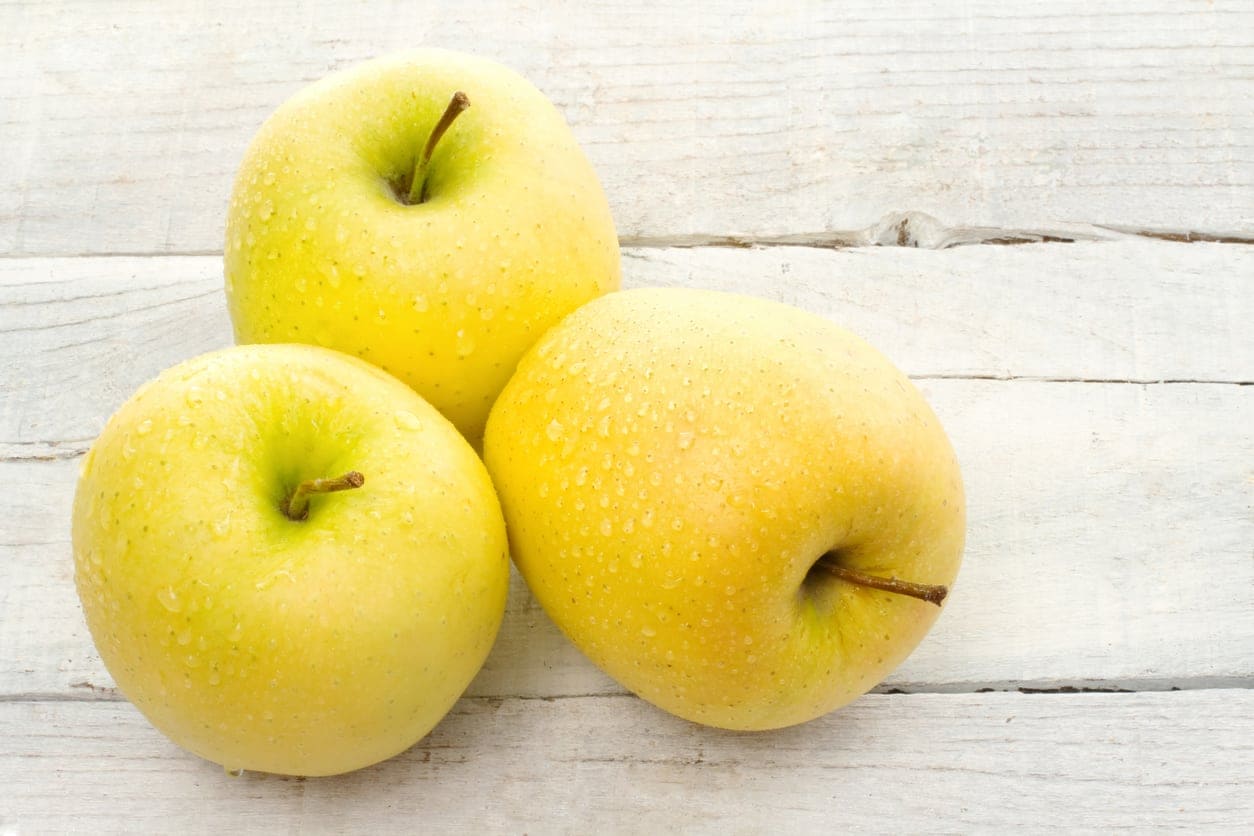
Professional chefs particularly appreciate Golden Delicious for its consistent performance. Whether you’re making applesauce, baking a tart, or simply slicing for a snack, you can count on predictable results.
The apples release just enough juice to keep baked goods moist without making crusts soggy, and their flavor develops beautifully when cooked while remaining pleasant raw.
The Specialty Stars: Unique Varieties Worth Seeking Out
Pink Lady: The Sophisticated Late Bloomer
Pink Lady apples march to their own drummer, ripening later than virtually any other variety and requiring specific growing conditions to develop their signature characteristics.
This extended growing season, combined with strict quality standards for sugar content and acidity, creates apples with remarkable complexity and a distinctive effervescent finish that almost sparkles on your tongue.
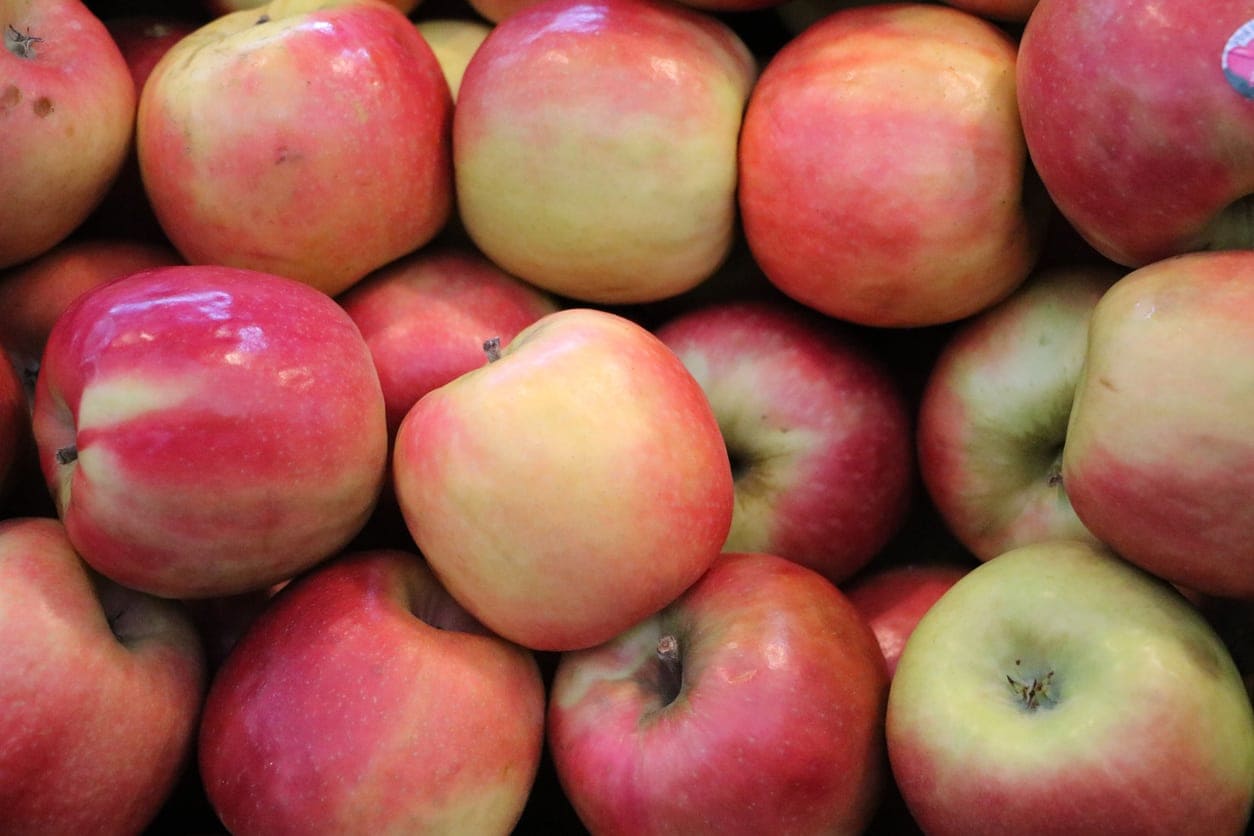
What makes Pink Lady particularly valuable in the kitchen is its slow oxidation rate. Cut a Pink Lady apple and it will stay white significantly longer than most varieties, making it ideal for cheese boards, fruit salads, and packed lunches.
The firm, crisp texture holds up beautifully in both fresh and cooked applications, while the balanced sweet-tart flavor adds sophistication to any dish.
Jazz: The Intense Experience
Jazz apples deliver exactly what their name promises—a burst of intense flavor that’s both tangy and sweet with remarkable aromatic qualities. Created by crossing Royal Gala with Braeburn, Jazz represents the best characteristics of both parents while adding its own distinctive personality.
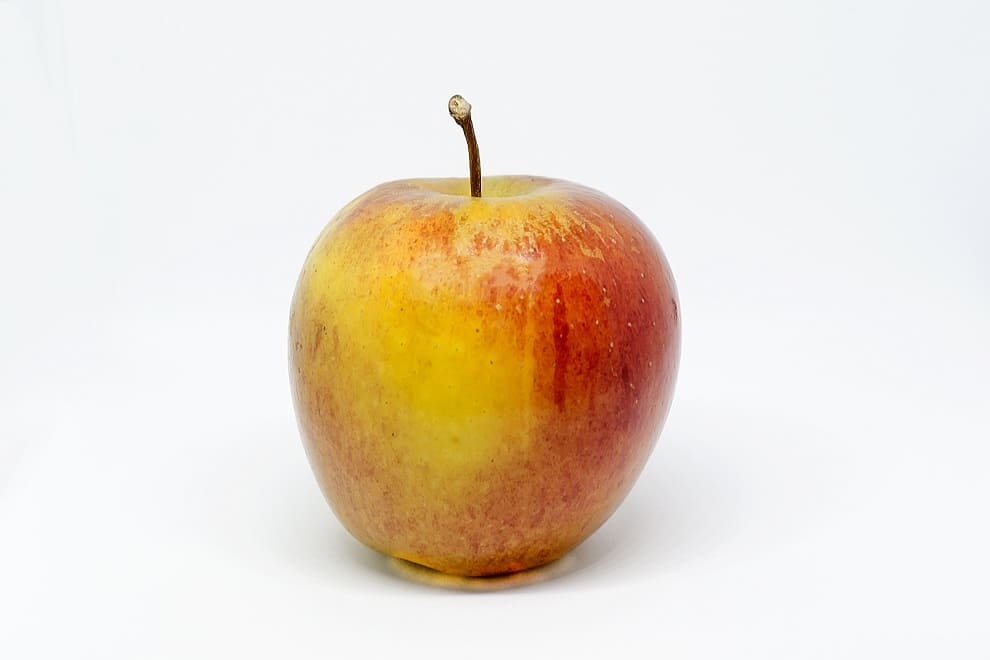
The texture of Jazz apples is particularly noteworthy. The flesh is incredibly dense, creating an almost aggressive crunch that some describe as requiring “strong teeth.”
This intensity makes Jazz apples particularly satisfying for snacking, and their robust structure means they hold up exceptionally well in applications where you want apples to maintain their shape and provide textural contrast.
Cosmic Crisp: The Future of Apples
Twenty years in the making, Cosmic Crisp represents the cutting edge of apple breeding. This Honeycrisp-Enterprise hybrid was designed specifically to address the storage and shipping challenges that plague many premium varieties while maintaining the flavor and texture qualities that modern consumers demand.
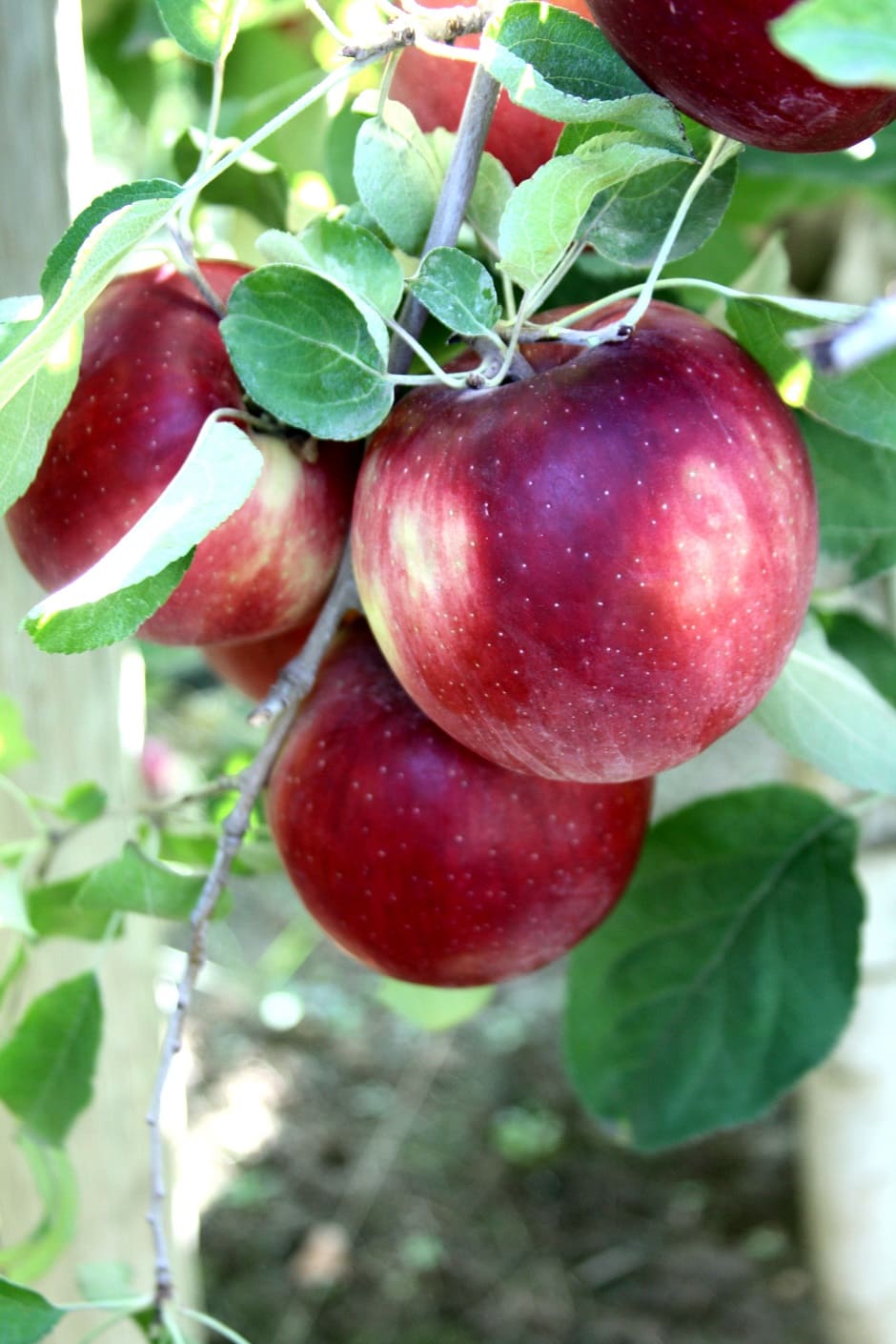
What’s remarkable about Cosmic Crisp is its storage capabilities. These apples can maintain their fresh-picked quality for up to a year when properly stored, making them a game-changer for both commercial distribution and home storage.
The flavor strikes a perfect balance between the honeyed sweetness of Honeycrisp and a refreshing tartness, while the texture provides satisfying crunch without being aggressive.
Envy: The Perfectly Round Temptation
Developed in New Zealand as a cross between Braeburn and Royal Gala, Envy apples live up to their provocative name with their striking appearance and exceptional eating quality. These apples are notably round and symmetrical, with vibrant red skin that often shows beautiful yellow speckles, creating an almost painted appearance.
The thick skin of Envy apples serves a practical purpose—it protects the crisp, juicy flesh inside while providing excellent storage capability. The flavor leans decidedly toward the sweet end of the spectrum, but with enough complexity to avoid being one-dimensional.
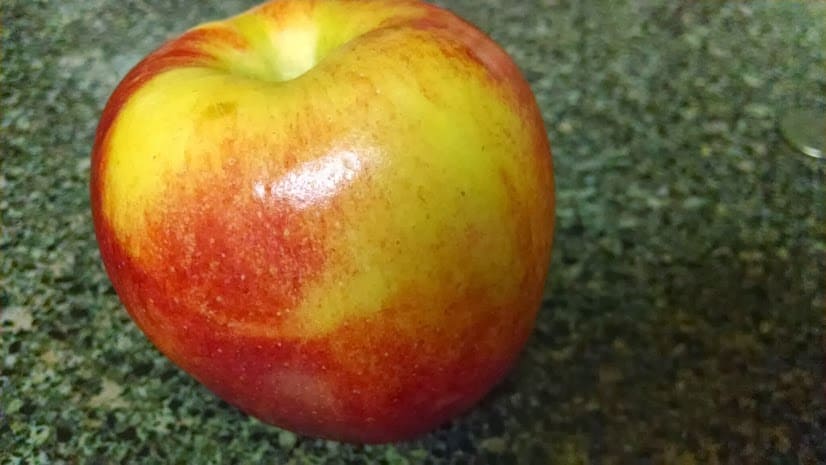
What sets Envy apart is its slow oxidation rate, making cut pieces stay white significantly longer than most varieties—a tremendous advantage for packed lunches, cheese boards, and fresh preparations.
Ambrosia: The Accidental Delight
Sometimes the best discoveries happen by accident. Ambrosia apples were found growing wild in British Columbia in the 1990s, likely the result of bees cross-pollinating a Jonagold with Golden Delicious. The name, meaning “food of the gods,” perfectly captures this variety’s ethereal sweetness and distinctive floral aroma.
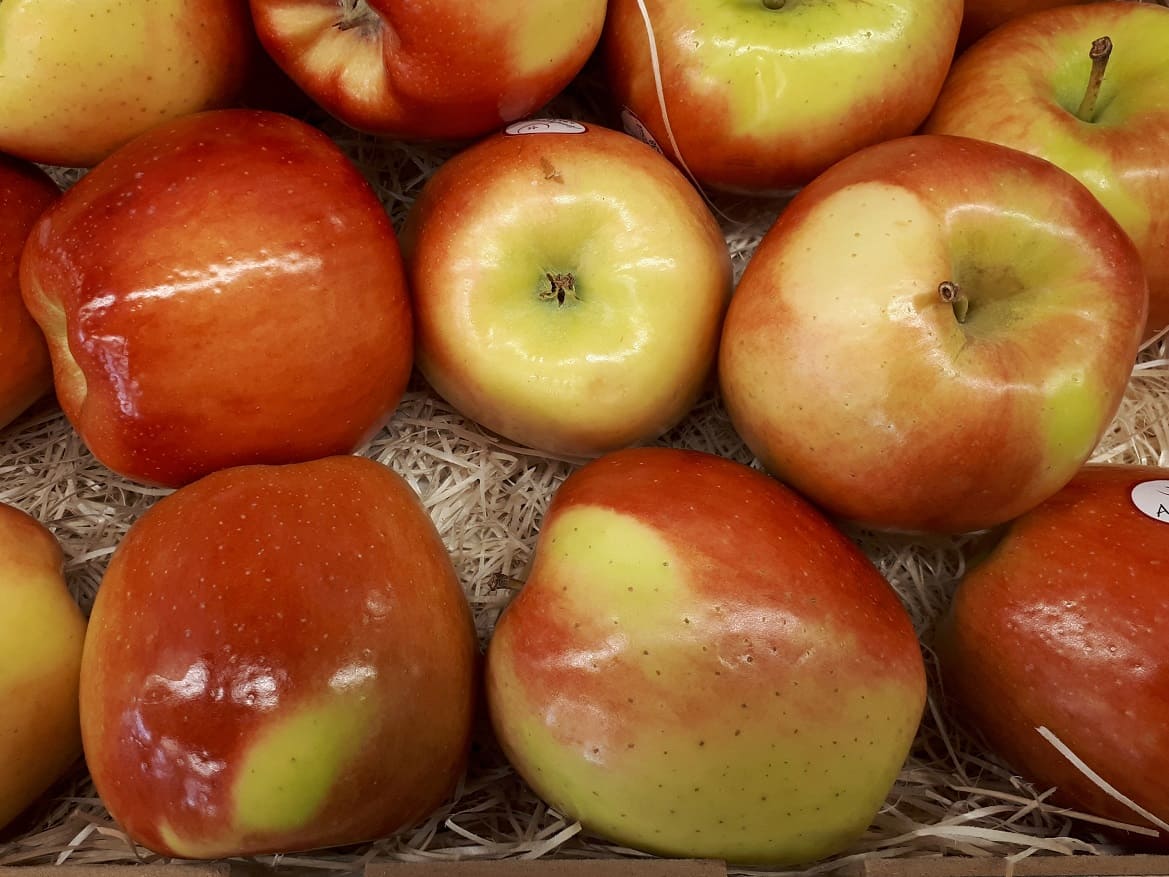
What makes Ambrosia unique is its incredibly low acid content, creating an almost honey-like sweetness that’s unlike any other apple. The creamy yellow flesh is crisp and juicy, with subtle tropical notes that some describe as reminiscent of pear or banana.
This low acidity makes Ambrosia particularly appealing to those who find most apples too tart, while the natural resistance to browning makes it excellent for fresh applications.
SweeTango: The Spicy-Sweet Innovation
Created by the same University of Minnesota program that gave us Honeycrisp, SweeTango represents the next generation of premium apples. This Honeycrisp-Zestar cross delivers intense sweetness balanced by vibrant acidity, with distinctive spicy notes that set it apart from its famous parent.
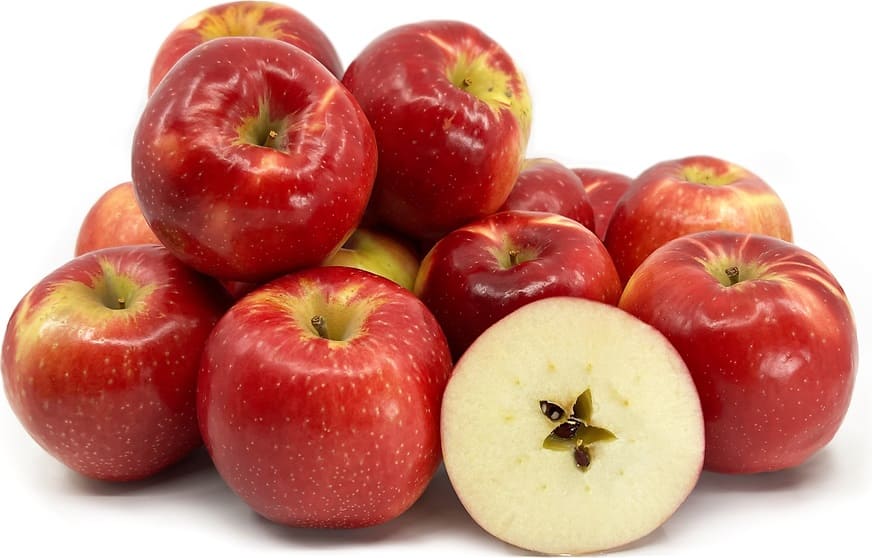
The texture of SweeTango is remarkably crisp—some describe it as “shatteringly” crunchy—while the flavor profile includes hints of citrus, honey, and warming spices that create complexity unusual in modern varieties.
The combination of intense flavor and exceptional crunch makes SweeTango particularly satisfying for fresh eating, though the complex flavor profile also translates beautifully to baking applications where you want the apple character to shine through.
Opal: The Non-Browning Wonder
Opal apples represent a breakthrough in apple breeding—a variety that naturally resists browning when cut, eliminating the need for lemon juice treatments in fresh preparations. This Czech-developed variety combines the genetics of Golden Delicious with Topaz, creating apples with bright yellow skin and distinctively sweet-tart flavor.
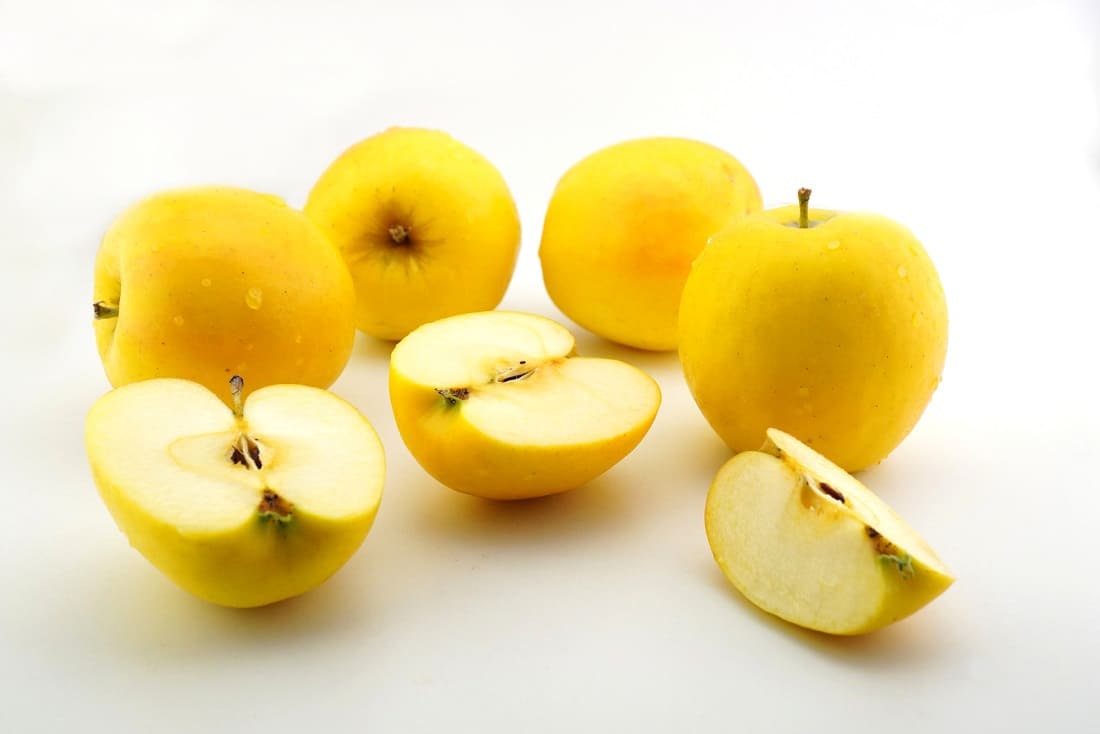
The non-browning characteristic makes Opal apples particularly valuable for school lunches, cheese boards, and any application where cut apples need to maintain their appearance over time.
The flavor is bright and tangy, with enough sweetness to be appealing but sufficient acidity to provide balance and prevent cloying sweetness. The crisp texture holds up well in both fresh and cooked applications.
SnapDragon: The Cornell Creation
Another success story from Cornell University’s apple breeding program, SnapDragon was developed alongside RubyFrost as part of a decade-long project to create apples specifically suited to New York growing conditions. The name perfectly describes the variety’s most distinctive characteristic—an incredibly crisp, snappy texture that delivers serious crunch.
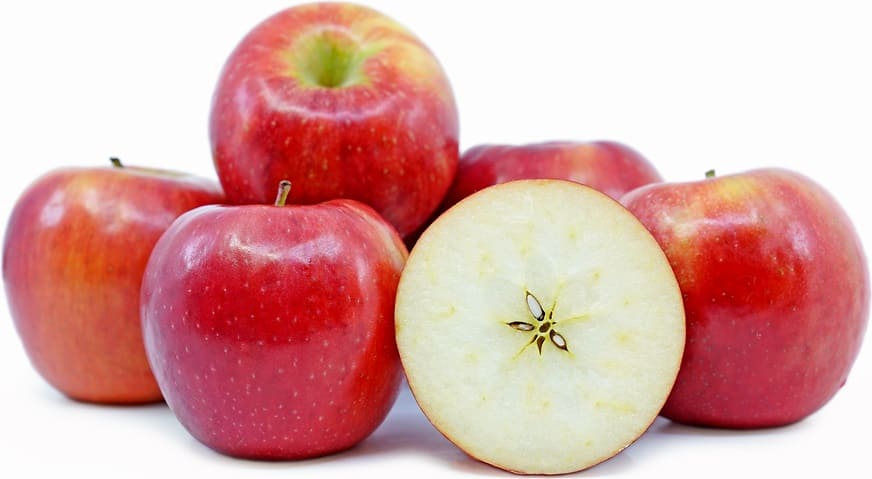
SnapDragon inherits some Honeycrisp genetics, but the flavor profile is distinctly different, offering spicy-sweet notes with hints of vanilla and cinnamon.
The texture is denser than Honeycrisp, creating a more substantial eating experience, while the flavor complexity makes it excellent for both fresh eating and baking applications where you want pronounced apple character.
👉 Read more about Growing Snapdragons: A Guide to Colorful, Frost-Hardy Flowers
Mutsu (Crispin): The Japanese Giant
Also known as Crispin in many markets, Mutsu represents Japan’s contribution to large, impressive apples. These fruits can grow quite large—sometimes exceeding a pound each—while maintaining excellent flavor and texture throughout their substantial size. The yellow-green skin and firm, crisp flesh make them instantly recognizable.
What sets Mutsu apart is its exceptional versatility combined with impressive size. The flavor balances sweetness with gentle tartness, while the firm texture holds up beautifully to both fresh and cooked applications.
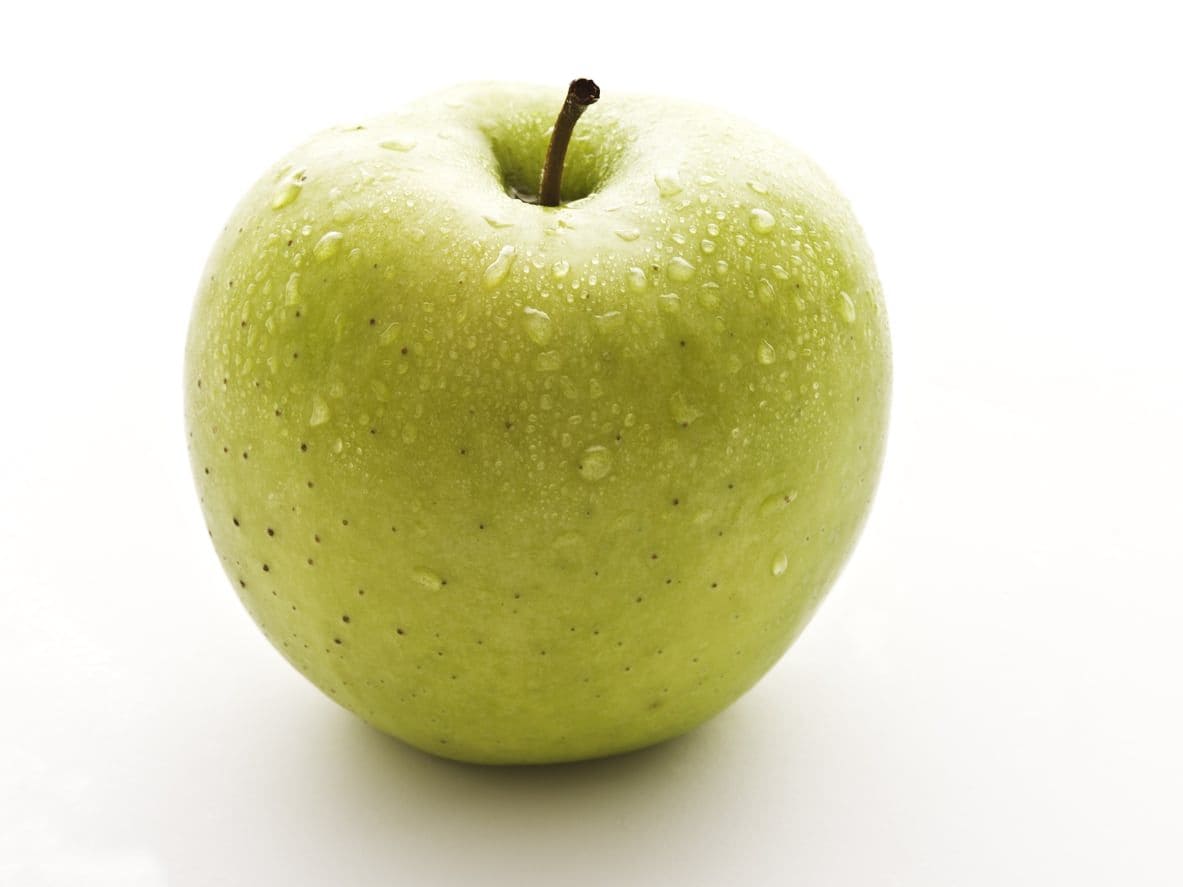
Professional bakers particularly appreciate Mutsu for pies and tarts where you want fewer apple pieces but don’t want to sacrifice flavor or texture. The large size also makes them economical for processing into sauce or juice.
Cider Crafting: The Art of Apple Blending
While most of our discussion focuses on eating and cooking apples, the world of cider-making opens up entirely different considerations for apple varieties. Traditional cider-making relies on blending apples with different characteristics to create complex, balanced beverages.
- Bittersweet Apples like Kingston Black and Dabinett provide the tannins that give cider its structure and complexity. These varieties often taste astringent when eaten fresh but contribute essential backbone to fermented beverages.
- High-Acid Varieties such as Granny Smith and Northern Spy provide the bright acidity that keeps cider refreshing and helps preserve it naturally. The sharp tartness that makes these apples pucker-inducing when eaten fresh becomes a virtue in cider.
- Aromatic Varieties like Gravenstein and Ashmead’s Kernel contribute complex flavor compounds that create depth and interest in the finished cider. These apples often have distinctive flavors that might be overwhelming in fresh eating but add sophisticated notes to fermented beverages.
- Sweet Varieties such as Fuji and Golden Delicious provide the sugars necessary for fermentation while contributing mild, pleasant flavors that round out the blend.
The art of cider-making lies in balancing these different apple personalities, much like a winemaker blends different grape varieties. Even if you’re not planning to make cider yourself, understanding these categories can help you appreciate the complexity that goes into creating exceptional apple beverages.
Heirloom Treasures: Rediscovering Apple History
The renaissance of interest in heirloom apple varieties has revealed flavors and textures that were nearly lost to commercial standardization. These varieties, many dating back centuries, offer experiences you simply cannot find in modern commercial apples.
Ashmead’s Kernel: The Ugly Duckling Masterpiece
This British variety from the early 1700s proves that appearances can be deceiving. Ashmead’s Kernel looks rather rough and rustic, with golden-brown russeted skin that would never make it past modern cosmetic standards. But one bite reveals why apple connoisseurs consider it among the finest-tasting apples in the world.
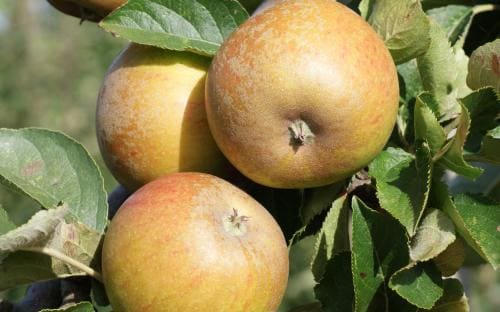
The flavor is incredibly complex, combining intense sweetness with sharp acidity and distinctive nutty undertones. Some tasters detect hints of pear, while others find notes reminiscent of fine wine. This complexity makes Ashmead’s Kernel particularly prized for cider-making, where its distinctive character can shine through fermentation.
Esopus Spitzenburg: The Presidential Favorite
Rumored to be Thomas Jefferson’s preferred apple, Esopus Spitzenburg offers a taste of American apple history. This variety combines rich, spicy flavors with wine-like complexity that develops and deepens during storage. While challenging to grow successfully, it rewards patience with unparalleled eating quality.

What makes Esopus Spitzenburg particularly interesting is how its flavor evolves. Fresh from the tree, it’s pleasant but not extraordinary. After several weeks of storage, however, the flavors concentrate and develop, creating one of the most sophisticated eating experiences available in the apple world.
Gravenstein: The Sauce Specialist
This Danish heirloom represents the pinnacle of cooking apples. Gravenstein breaks down beautifully when cooked, creating applesauce with complex tart-sweet flavor and natural pink coloring that no commercial variety can match. The texture becomes silky and smooth, while retaining enough structure to avoid becoming watery.
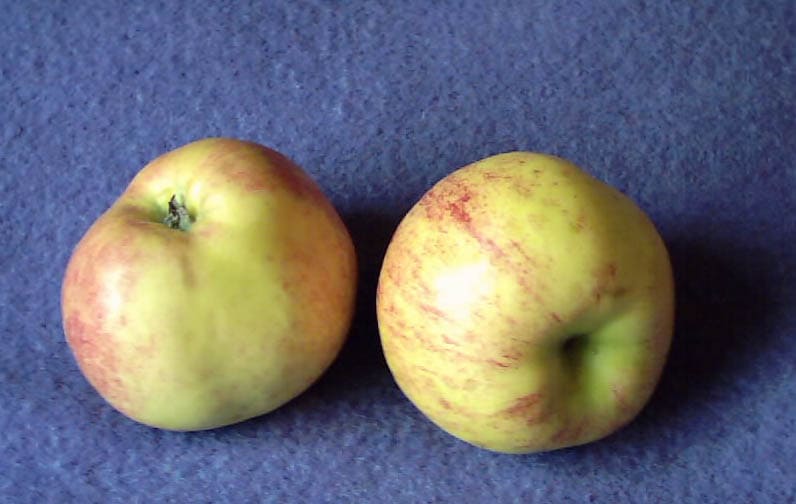
What sets Gravenstein apart is its aromatic intensity. When cooked, it fills the kitchen with an intoxicating apple fragrance that speaks to generations of home baking traditions. While not ideal for fresh eating due to its soft texture, Gravenstein transforms into liquid gold when cooked.
Arkansas Black: The Mystery of the Deep Purple
This striking heirloom variety produces apples so dark they appear almost black, with deep purple skin that becomes more intense during storage. Discovered in Arkansas in the 1870s, Arkansas Black represents the extreme end of the apple color spectrum while offering equally dramatic flavor development.
When first harvested, Arkansas Black apples are quite hard and astringent, but proper storage transforms them completely. After several months in cold storage, the flesh softens slightly while the flavors concentrate and mellow, developing wine-like complexity with notes of spice and dark fruit.
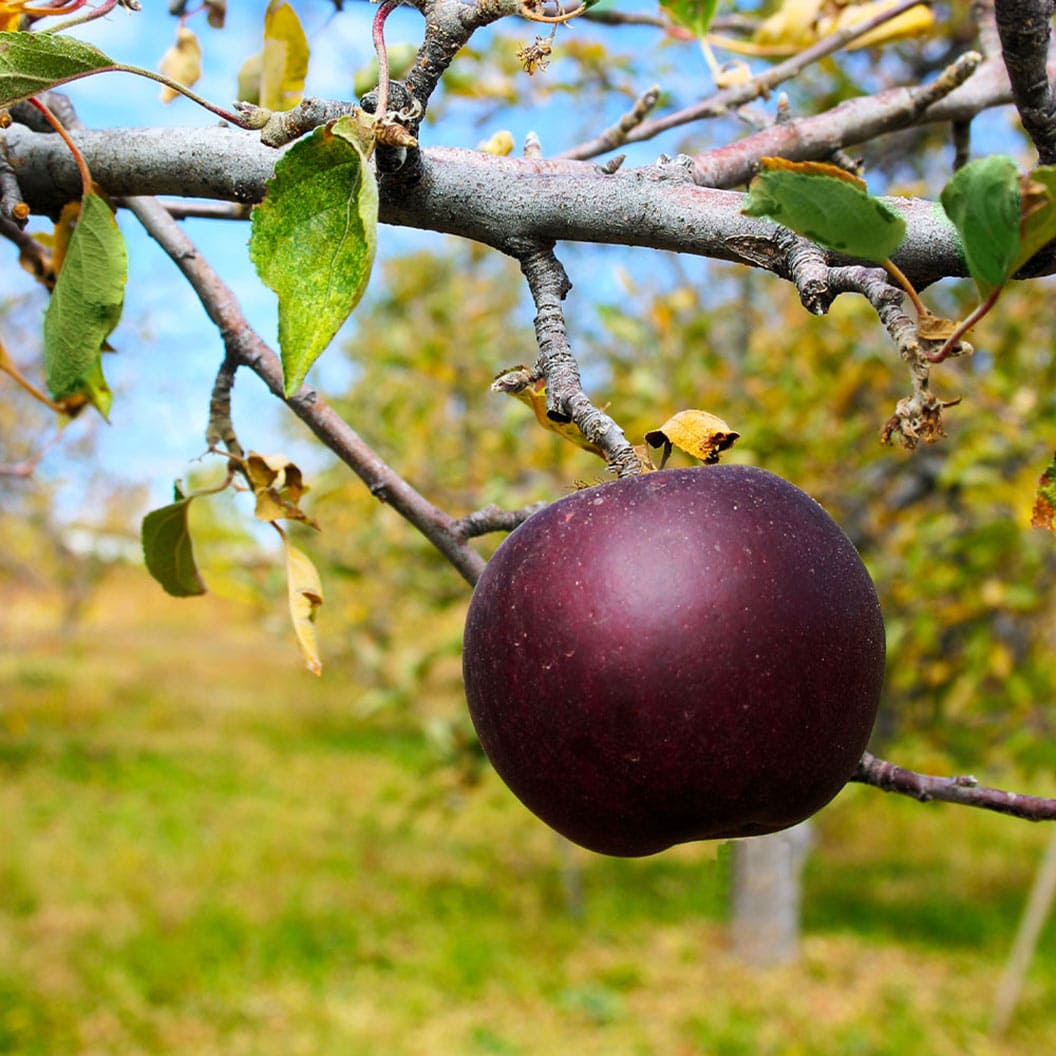
The golden flesh provides beautiful color contrast when sliced, making these apples as visually striking as they are flavorful.
Northern Spy: The Baker’s Secret Weapon
Despite its mysterious name, Northern Spy has nothing to do with espionage and everything to do with exceptional baking performance. This large, attractive apple with red striping over yellow-green skin has been the secret weapon of professional bakers for over 150 years, prized for its ability to maintain perfect texture in pies and tarts.

What makes Northern Spy exceptional for baking is its dense, fine-grained flesh that releases moisture slowly and evenly during cooking. This prevents the soggy bottoms that plague many apple pies while maintaining distinct apple pieces with tender but not mushy texture.
The flavor is complex and tart, providing excellent balance to sweet pie fillings while developing deeper notes during baking.
Roxbury Russet: America’s Oldest Apple
Believed to be the oldest apple variety developed in America, Roxbury Russet dates back to around 1635 in Massachusetts. The rough, brownish skin might not win any beauty contests, but this variety represents a direct connection to colonial American history and demonstrates remarkable adaptation to North American growing conditions.
The flavor of Roxbury Russet is intensely complex, with sweet-tart balance and distinctive nutty undertones that develop during storage. The dense flesh makes excellent cider, while the natural keeping qualities meant these apples provided fresh fruit through long New England winters before modern storage techniques existed.
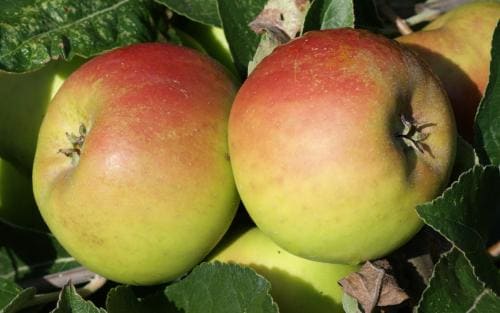
Today, Roxbury Russet offers a taste of American apple heritage combined with unique flavors unavailable in modern varieties.
Newtown Pippin: The Export Champion
Also known as Albemarle Pippin, this Virginia variety achieved international fame when it became the first American apple to be successfully exported to Europe. The yellow-green skin and firm, fine-grained flesh hide complex flavors that develop and improve during storage, eventually reaching extraordinary depth and sophistication.
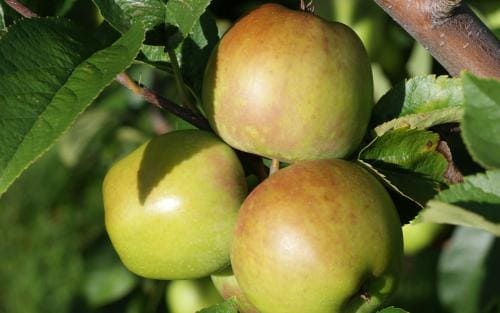
What made Newtown Pippin historically significant was its exceptional keeping quality and ability to improve during long ocean voyages to European markets. The flavor starts tart and somewhat austere, but months of storage develop honeyed sweetness balanced by wine-like complexity.
Even today, properly stored Newtown Pippins eaten in late winter or spring offer flavor experiences impossible to achieve with freshly harvested fruit.
Winesap: The Spicy Heritage
True to its name, Winesap apples offer distinctive wine-like flavors with spicy undertones that set them apart from other heirloom varieties. The deep red skin and firm, fine-grained flesh create apples that are as beautiful as they are flavorful, with complex taste profiles that include notes of cinnamon and other warming spices.
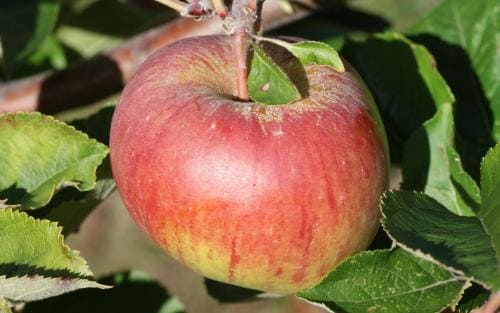
Winesap apples excel in both fresh eating and cooking applications, but their real claim to fame lies in cider production. The complex flavors and natural tannins create ciders with exceptional character and aging potential.
The firm texture also makes them excellent for long-term storage, with flavors that continue developing and improving for months after harvest.
Mastering Apple Selection: Matching Variety to Purpose
Understanding which apple to choose for specific applications can transform your cooking and eating experiences. Rather than relying on generic “cooking apple” or “eating apple” categories, let’s explore the nuanced relationships between apple characteristics and their optimal uses.
The Science of Baking Success
Successful apple baking depends on understanding how different varieties behave under heat. Apples with high pectin content and firm cellular structure, like Granny Smith and Rome Beauty, maintain their shape and provide textural interest in pies and tarts. Their cells break down slowly, releasing moisture gradually without creating soggy bottom crusts.
Conversely, varieties like McIntosh and Gravenstein have softer cellular structures that collapse quickly under heat. While this makes them unsuitable for maintaining distinct apple pieces in pies, it creates incredibly smooth, flavorful applesauce and apple butter with minimal cooking time.
For the perfect apple pie, many professional bakers combine varieties—using firm apples like Granny Smith for structure and softer varieties like Golden Delicious for flavor and natural sweetness. This technique creates pies with both textural interest and complex flavor development.
Fresh Applications and Storage Strategies
Different apple varieties have dramatically different storage capabilities, which affects both their availability and their optimal use timing. Understanding these patterns helps you plan purchases and storage for maximum enjoyment.
- Excellent Keepers like Fuji, Pink Lady, and Arkansas Black can maintain quality for months when properly stored, making them ideal for long-term storage and consistent availability. These varieties often actually improve during storage as their flavors concentrate and develop.
- Short-Term Varieties like Gravenstein and Paula Red are best enjoyed soon after harvest. Their more delicate cellular structure means they lose quality relatively quickly, but when fresh, they offer flavors and textures unavailable in longer-keeping varieties.
- Medium Keepers such as Gala and Golden Delicious strike a balance, maintaining good quality for several weeks to a few months while offering excellent fresh eating characteristics.
Seasonal Timing and Peak Quality
Apple varieties ripen across an extended season from late summer through late fall, with each variety having its own optimal harvesting window. Understanding this timing helps you experience apples at their absolute peak quality.
- Early Season (Late July – August): Varieties like Ginger Gold and Paula Red signal the beginning of apple season. These apples are often best enjoyed fresh, as their delicate flavors and textures don’t always translate well to storage.
- Mid-Season (September – Early October): This period brings us many of the most popular varieties, including Gala, Honeycrisp, and McIntosh. The combination of warm days and cool nights during this period creates ideal conditions for developing the sugar-acid balance that makes these apples exceptional.
- Late Season (Late October – November): Late varieties like Pink Lady and Arkansas Black often have the most complex flavors and best storage capabilities. The extended growing season allows these apples to develop characteristics impossible to achieve in earlier varieties.
👉 Discover When and How to Harvest Vegetables for Peak Flavor: Timing and Tips for Every Crop
The Health Story: Beyond “An Apple a Day”
Modern research has validated many traditional beliefs about apples’ health benefits while revealing additional advantages that weren’t understood in previous generations. The combination of fiber, antioxidants, and specific phytochemicals makes apples particularly valuable for long-term health.
The pectin in apples acts as both soluble fiber and a prebiotic, feeding beneficial gut bacteria while helping to regulate cholesterol levels. Different varieties contain varying amounts of pectin, with tarter varieties generally containing higher levels. This partially explains why traditional wisdom favored tart apples for health benefits.
Recent research has also revealed that apple skins contain the highest concentrations of beneficial compounds, including quercetin and other flavonoids that may help reduce inflammation and support cardiovascular health.
This knowledge reinforces the importance of choosing organic apples when possible and eating the whole fruit rather than just the flesh.
Interestingly, some people who experience allergic reactions to modern apple varieties can often tolerate heirloom varieties, which contain different protein structures. Varieties like Jonagold and many russet apples are worth trying for those who have had apple sensitivities in the past.
Smart Shopping and Storage Mastery
Selecting exceptional apples requires understanding what to look for and how different varieties express quality. The best apples feel heavy for their size, indicating good juice content and proper maturity. The skin should be tight and firm without any soft spots, wrinkles, or dark patches that indicate deterioration.
When evaluating apples, consider the variety’s typical characteristics. A Granny Smith should feel rock-hard and have vibrant green color, while a Red Delicious should have deep, even red coloring without brown patches. Honeycrisp apples often show some natural variation in color and may have slight dimpling that’s perfectly normal for the variety.
👉 Read the Ultimate Guide to Choosing Ripe Watermelons: Expert Tips and Tricks
Storage optimization varies significantly by variety. Most apples benefit from refrigeration, but the optimal conditions differ. Hard, dense varieties like Fuji and Pink Lady can handle slightly drier conditions, while softer varieties like McIntosh prefer higher humidity.
The key principle is keeping apples cold while allowing some air circulation to prevent moisture buildup.
For longer-term storage, wrap individual apples in newspaper and store them in a cool, dark place like a basement or garage where temperatures remain consistently between 32-35°F. This traditional method can keep good storing varieties fresh for months.
Your Apple Adventure Awaits
The world of apples offers endless discoveries, from the familiar comfort of a crisp Gala to the complex pleasures of an heirloom Ashmead’s Kernel. Whether you’re seeking the perfect pie apple, the ultimate lunchbox snack, crafting homemade cider, or simply wanting to expand your palate, there’s an apple variety waiting to become your new favorite.
The beauty of apple exploration lies in the journey itself. Each variety tells a story—of the place where it was discovered, the people who preserved it, the specific growing conditions that bring out its best characteristics.
When you choose a Honeycrisp, you’re experiencing decades of careful breeding work by University of Minnesota researchers. When you bite into an Esopus Spitzenburg, you’re tasting the same variety that may have graced Thomas Jefferson’s table.
Don’t limit yourself to just one or two familiar varieties. Embrace the diversity, experiment with different types for different uses, and remember that the “best” apple is always the one that brings you the most joy in that particular moment.
Common questions often arise during apple exploration
If store-bought apples never seem to match the flavor intensity of fresh-picked fruit, it’s because commercial apples are often picked before peak ripeness for shipping purposes and may have been in controlled atmosphere storage for months. While this extends shelf life, it can diminish flavor intensity compared to tree-ripened fruit.
For those who usually avoid apples due to texture or flavor preferences, Gala or Fuji varieties often convert skeptics with their mild, sweet profiles and pleasant textures. These varieties lack the assertive characteristics that some people find off-putting in apples like Granny Smith or Red Delicious.
When substituting apple varieties in recipes, consider the purpose rather than just swapping randomly. For baking applications, substitute firm varieties for firm ones, and remember that cooking time may need adjustment.
Golden Delicious remains the ultimate substitute apple, performing adequately in virtually any application when your preferred variety isn’t available.
Your next steps
This week, try one apple variety you’ve never tasted before. Visit a local orchard or farmers market to discover unique varieties unavailable in supermarkets. Experiment with using different apple varieties for different purposes—tart varieties for baking, sweet ones for fresh eating, and perhaps explore some heirloom varieties for special occasions.
The apple world is vast, delicious, and waiting for you to explore. Every bite is an opportunity to discover something new, whether it’s a variety you’ve never tried or a new way to enjoy an old favorite. Happy crunching!
